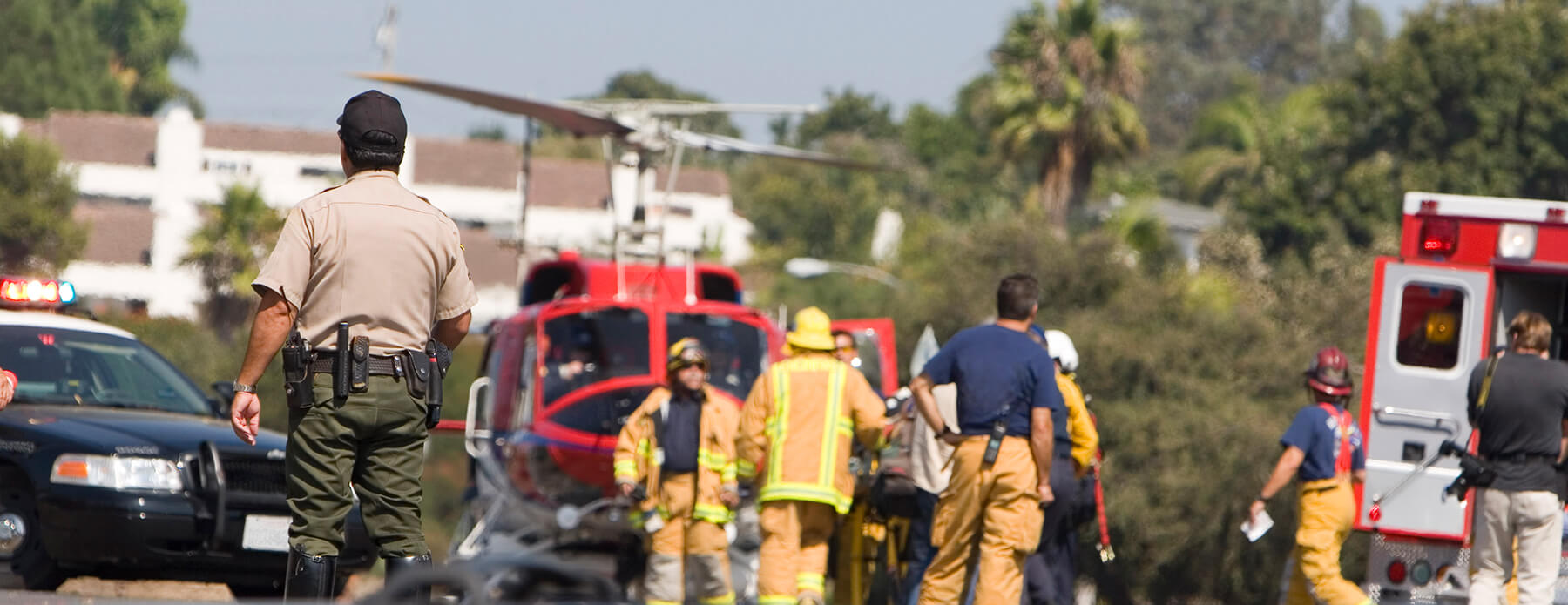Tidal Basin reviews the biggest disasters of the year
2020 has been nothing short of a year filled with disasters. From hurricanes to wildfires to COVID-19, Tidal Basin has identified the Top Ten Disasters of 2020 based on the events that were significant due to historical records, the number of people impacted or the estimated financial impact to insured and uninsured property.
Today, we recap the disasters that made Tidal Basin’s top ten list and highlight the number one disaster of 2020: The Coronavirus Pandemic
#10 – The 2020 Washington State Wildfire Season
More wildfires were reported in Washington in 2020 than any year prior. Across Washington State, the 2020 spring season was very wet, particularly in the central and western areas of the state. However, by summer the faucet was turned off and no significant measurable rainfall was recorded in over 60 days between June and August according to the Spokane National Weather Service Office. The addition of record high temperatures for several weeks created a combustible environment providing all the ingredients to spark massive wildfires. The extreme number of fires were fueled by moderate to extreme drought conditions across the Pacific Northwest.
Hurricane Zeta was one of 12 landfalling systems to impact the U.S. during the 2020 Hurricane Season. Zeta was also one of six storms to make landfall in Louisiana and not only left damage along the coast but well inland across the Southeast and up the Eastern Seaboard. At the height of the storm’s local impacts, millions were left without power. One of the hardest hit states was Georgia where the storm left over one million people without power. Overall, Hurricane Zeta resulted in an estimated four billion dollars in damages and resulted in three storm related deaths in Georgia alone from fallen trees.
The Oregon disaster was months in the making and resulted from the lack of rainfall and extreme heat across the Northwest. Over the summer, Oregon officials feared the state would face an extremely intense fire season and began a fire safety campaign warning the public to take precautions to help prevent fires. Unfortunately, massive fires flared up a few days after Labor Day, with the most intense impacting the Southeast region of the state near Medford. Eleven people died in the fires.
#7 – The Tennessee Tornado Outbreaks
Severe weather in Tennessee made number seven on the Top Ten list, as the Volunteer State experienced twin tornado outbreaks in March and April – producing a total of 14 tornadoes combined, including and EF4 near Cookeville and an EF3 near Chattanooga. The tornadoes killed 28 people in Tennessee and injured over three hundred.
Sally was upgraded to a hurricane in mid-September as the system intensified in the Gulf of Mexico. The hurricane was the first to make landfall in Alabama since Hurricane Ivan in 2004. The eye came ashore on September 16th near Orange Beach, Alabama as a strong category 2 hurricane with winds near 105 miles per hour. The system produced devastating rainfall from the Florida panhandle to Mobile with some areas receiving nearly 20 inches of rainfall. The damages from Sally are expected to surpass $6 billion with most of the damages coming from the Florida panhandle and southern regions of Alabama. The storm’s heavy rains and winds also severely impacted farmers in the region who lost crops from the excessive rainfall.
Hurricane Isaias made landfall on Ocean Isle Beach, North Carolina on August 4th as a category 1 storm. The system is most noted for its extended swath of damage from the Carolinas to New England. The storm produced tropical storm force winds between 40 to 70 mph across the mid-Atlantic region. Peak wind gusts in New York were near 70 miles per hour knocking out power to an estimated 300,000 Con Edison utility customers, 180,000 of those in the city of New York. It took the utility about a week to ten days to restore outages. Isaias produced over 30 tornadoes, with the hardest areas in the Carolinas, Maryland, and Virginia. The storm system is responsible for killing eighteen, 15 on the U.S. mainland, 1 in Puerto Rico, and 2 in the Dominion Republic. Isaias resulted in behind five billion dollars in damages in the U.S., the Bahamas, and Caribbean.
A Derecho caused extensive damage in several Midwestern states including Iowa. Derechos are classified as a widespread wind event which have a continuous damage path of greater than 250 miles with a continuous area of winds of 58 mph, with some embedded stronger winds greater than 70 mph. The August Derecho created a 750-mile path of damage with peak winds over 100 mph, with some gusts as high as 140 mph in Central Iowa.
#3 – Hurricanes Laura and Delta
Hurricane Laura was the first major hurricane of the 2020 season and the strongest storm to impact Louisiana in over 150 years as a category 4 hurricane. The storm came ashore in Cameron Parrish and the eye wall moved directly over the Lake Charles region of southwest Louisiana. The downtown region of Lake Charles took the brunt of the storm, with significant damage to the city’s business district and the lake front area. Six weeks after Laura, Hurricane Delta made landfall on Oct 9th where it came ashore less than 15 miles to the east of where Laura made landfall near Cameron, Louisiana. Delta hampered the efforts of the U.S. Army Corps of Engineers’ blue roof mission. Hurricanes Laura and Delta were just two of many events the Louisiana Governor’s Office of Homeland Security and Emergency Preparedness (GOHSEP) responded to while also supporting the state’s COVID-19 pandemic response.
#2 – The California Wildfire Season
By late summer, a combination of extremely dry conditions, high winds, and lightning strikes from storms sparked a ticking time bomb in California. The state had been a tinder box after repeated years of dry weather and warming temperatures. This summer’s weather also impacted the extent and number of wildfires as storms caused hundreds of lightning strikes in August which ignited numerous fires especially in central and northern California.
Since January 1st, the state has recorded over ten thousand wildfires according to the California Department of Forestry and Fire Protection. On average, the state battles approximately six thousand wildfires per year. Since December 20th, over 4.2 million acres have burned – far exceeding the previous record of just under 2 million acres. The deadliest fire in California in 2020 was the North Complex fire which burned over 300,000 acres and killed 15.
#1 – The Coronavirus Pandemic
After its discovery in China in late December, the virus quickly spread globally and made its way to the United States by early January. The initial U.S. hotspots were a nursing home in Washington State and New York City. The nation’s leading infectious disease expert Dr. Anthony Fauci called the pandemic, “the most historic virus outbreak in U.S. history in over 100 years.” He stated, “We are going through the most extraordinary experience of historic outbreak, the impact in the likes of which we have not seen on this planet in 102 years since the pandemic of 1918.”
By March, the country was shut down for weeks, forcing schools to switch to virtual learning and businesses to close causing severe economic impact. By mid-summer, the virus peaked again after leveling off in September. Cases jumped dramatically from September to October, the virus breaking daily records for the last few weeks of the year. In December, Pfizer and Moderna received emergency authorization for their COVID-19 vaccines by the FDA.
As the first vaccines rolled out, Dr. Fauci says it is the beginning of the end but warns of the possibility of more pandemics in the future. “It’s difficult to predict when that will be, but just as we have predicted and as I have multiple times over the years, this will happen again. So, I think we need to pause for a moment and look at what has really happened in the middle of and in the context of a historic outbreak,” Fauci further stated.
2020 has been one of the most active years for disasters in history. Tidal Basin is here to support federal, state and local communities and clients through future disasters, and hope to help prepare for these disasters when they should strike.



